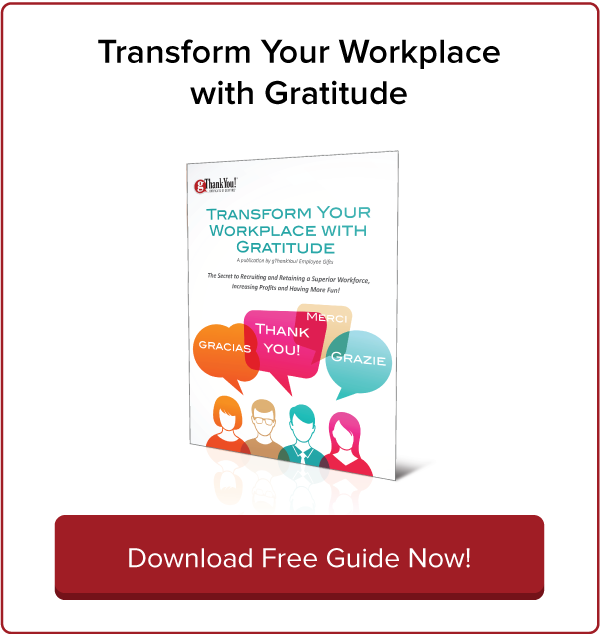
International Day of Happiness is March 20. How happy are your employees?
Employee happiness is the natural result of a recognition-rich culture that engages everyone. The biggest mistake that leaders can make is to assume that happiness happens naturally in the workplace. It’s important to be proactive, ask questions, and consistently assess levels of engagement. We’re not afraid to boldly state that employee engagement equals happiness… and if it doesn’t, there are some other systemic issues at play that may need to be explored.
Why Does Happiness Really Matter?
We all know we’d prefer to be happy. Yet leaders must understand the true impact of their team’s happiness levels and be willing to adjust accordingly. Employees’ happiness affects an organization’s profitability, retention, daily output, and much more.
A few stats and insights:
- A study by Gallup found that companies with highly engaged workforces outperform their peers by 147% in earnings per share. Engaged employees are typically happier and more satisfied with their jobs.
- According to a survey by TINYpulse, 75% of employees who rate their work culture positively say they are happy with their jobs, and 70% would turn down a higher-paying job elsewhere.
- A study published in the journal Occupational and Environmental Medicine found that employees who reported “excellent” job satisfaction were less likely to develop mental health conditions like depression and anxiety.
- Happy employees are more creative and innovative. Research from the University of California, Berkeley, found that people in a positive mood are more likely to think creatively.
Happiness Begins at the Top
It’s increasingly clear that workplace leaders wield incredible power in building employee happiness. Leaders set the tone for communication and ultimately define the culture of a workplace. However, research studies show that management is still catching up. However, it’s always a good time to begin fostering a truly happy workplace.
In a Forbes article by Antonia Bowring, she states:
“Why should leaders formally be held accountable for their employees’ well-being? First, it’s the right thing to do. We need to recognize that our well-being is deeply impacted by the community and support around us. We spend so much time at work, it should positively impact our well-being. We are all part of a community at work, and there are so many unexplored ways to increase well-being for everyone.
“Second, numerous studies show organizations that invest in employee well-being often reap the benefits of increased productivity, engagement, talent retention and customer satisfaction.”
What You Can Do to Build Employee Happiness Today
This International Day of Happiness, commit to increasing employee happiness for every employee — no matter their role, at every point in the employment cycle. Start before employment and see it through.
Employer Brand
Happy employees can be the key to new employee referrals and increased job applicants. Happiness is what makes an employee excited to tell friends about their own job and job opportunities. Even after an employee leaves the company, it’s ideal for them to still be an ambassador for your employer brand — which will only happen if they were happy and treated well during their tenure.
Onboarding
Your company’s onboarding experience should encompass “preboarding” (before a new hire even sets foot in the workplace) to how new hires are welcomed on the first day, first month, first year of employment. Don’t just tell candidates and new hires what a great company culture you have, model it from the beginning! This means more recognition, appreciation and, above all, clear communication. Don’t hesitate to share gratitude and small welcome gifts that will bring a smile.
Warm Up Disengaged Workers
A study by The Engagement Institute estimated that disengaged employees cost the US economy between $450 billion and $550 billion per year. This estimate includes factors such as lost productivity, absenteeism, and turnover. Behind this astronomical figure are real people and real companies struggling with near epidemic levels of disengagement. These are not happy employees.
The three main factors of disengagement are intangible. Disengaged employees don’t…
- Understand why or feel like their work matters.
- Trust management.
- Feel valued or recognized.
YOU can turn that around!
Remote Employees Need to Be Happy, Too!
Remote workers often have one problem in common, no matter if they’re on the road, at home, or in a satellite office. Isolation.
Working remotely is on the rise, meaning the common challenge of engaging remote workers isn’t going anywhere anytime soon.
Don’t forget to include remote workers in employee recognition efforts and workplace celebrations! Remote workers often miss out on the day-to-day camaraderie and relationships built over time through coffee breaks, office birthday parties, and other low-key celebrations. Bring in remote workers via in-person meetings or videoconferencing and be sure to share by sending small party favors when you can, like pizza gift certificates.
Looking for more happiness inspiration? Check out Action for Happiness’ Instagram or connect with others at the International Day of Happiness website or via social media with the hashtag #InternationalDayofHappiness.
Make Employee Happiness a Year-Round Priority: Download Your Employee Celebration Calendar
Keep the commitment going towards building a culture of appreciation and loyalty. Download gThankYou’s FREE “Day-to-Day Employee Celebration Calendar” and nurture an everyday culture of appreciation that employees will love.
Learn More About gThankYou Certificates of Gratitude:
- Check out our Home Page
- See all our Gift Certificate Choices
- Watch our ‘About Us’ Video
- See what customers say in our Case Studies
- Look at our FAQ
- See our FREE customizable Gratitude cards
- Reach us at 888-484-1658 or via info@gthankyou.com









